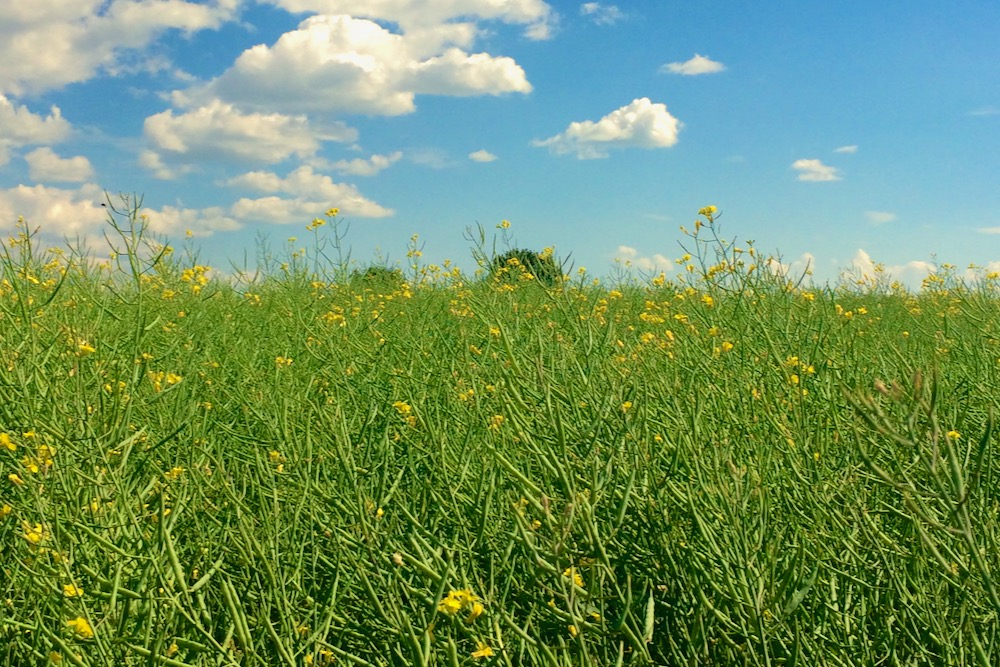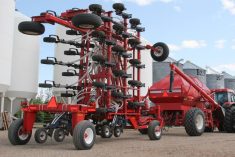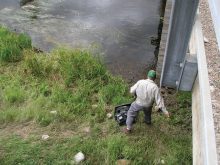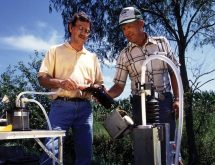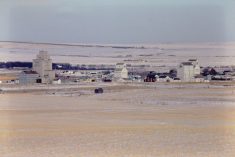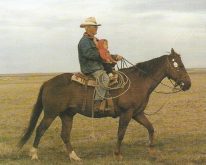There has been much ink spilled this winter talking about big farms and the problem of too few medium-sized farms to pick up the equipment trade-ins from big farms. Part of the problem is the electronic bells and whistles that dust out when the mechanical parts have much useful service left. Bells start ringing and you have no idea whether the problem is the combine or the bell itself.
However, the farm size question is much more complicated than that. Very large wheat farms go back to the 1880s in the Red River Valley.
Read Also

Claas brings 1000 Series SP forage harvesters to Canada
In mid-August, Claas unveiled its new line of Jaguar forage harvesters at an event in Visalia, California, deep in the heart of that state’s dairy region.
Several years ago, it was my luck to find a special book by S. N. Murray entitled, The Valley Comes of Age: A History of Agriculture in the Valley of the Red River of the North, 1812-1920.
In North Dakota in 1876, one Oliver Dalrymple started small at 1,280 acres of wheat, which gave him 32,000 bushels to sell. With considerable capital at his disposal, he expanded rapidly to 32,000 acres in crop by 1885. Then, as now, that required a lot of equipment, but also 600 men at seeding and 800 at harvest.
It was not operated as a single unit. There were 2,500-acre tracts, each with superintendents and foremen. Other large farms followed suit with numerous farms of 10,000 to nearly 20,000 acres.
Not to be outdone, several bonanza farms also occupied the Minnesota portion of the Red River Valley. One was 33,000 acres. Hard to imagine such large farms given the equipment available at that time. However, all used the latest mechanization of the times — binders, steam-powered threshers, ploughs and seeders.
As farms expanded and small settlers became established, the good land in the Red River Valley was occupied. Further expansion required extensive drainage works. After drainage, those soils were the best of all. Without extensive drainage, the Red River Valley on both sides of the border would not be what it is today. But that’s a story for another day.
The original high wheat yields were largely compliments of newly broken, high organic matter soils with ample plant nutrients.
The demise of the big farms was not a single cause. The success of Dalrymple encouraged other large wheat farms and the oversupply of wheat dropped the price. With wheat being a one-trick pony, there was no crop rotation, so disease became an issue. Weeds soon followed — things like wild mustard, wild buckwheat, wild oat, cow cockle and Canada thistle were culprits. None of those are any stranger to us to this day.
As the machinery started to wear out, the big farms had to borrow big money at high interest rates. Do any of these things sound familiar to readers long enough in the tooth to remember high interest rates? Our current low interest rates can turn into high interest rates and what does that do to big debt!
While many of the big farms grew only continuous wheat, Dalrymple rotated wheat, barley and oats, summerfallowed part of the land each year and ploughed under clover every four years.
Another very large farm (61,000 acres) owned by the Grandin brothers also diversified into livestock, with sheep, pigs and cattle. I wonder if that is where the name Grandin wheat came from? It was a North Dakota variety that was being introduced to Canada in the 1990s. It might have had 14 per cent protein but it was about 90 per cent politics, as I remember it.
The big farms all passed into history, but it was a very interesting time in the development of agriculture in the Northern Great Plains and especially the fertile Red River Valley.
Big farms in Saskatchewan: The Bell Farm
The most famous big wheat farm in Saskatchewan was the Bell Farm in what is now the Indian Head area.
In 1881, before the railway, Major William R. Bell walked from Brandon, Man., to pick the land he wanted to start a large wheat farm. He moved fast. In 1882, Qu’Appelle Valley Farming Company was incorporated with money from Scottish investors and Bell in charge. The company bought approximately 53,000 acres in a block and on terms. The even-numbered sections were bought from the government of Canada and odd-numbered sections from the CP Railway. The price was $1.25 per acre and interest on unpaid balance was six per cent.
He quickly built a large, 16-room, stone manor house. It was 43×40 feet with a wing that was 23×44 feet. The famous stone, round barn was 64 feet in diameter with single and box stalls, hayloft, oat bin and office.
The Bell Farm was separated into five divisions. Each section of land within a division was split into three fields of 213 acres each. On each 213-acre parcel there was a cottage, stable and granary, plus horses, ploughs, wagon and binder.
Each 213-acre parcel was further subdivided into three fields and farmed in a wheat, wheat, summerfallow rotation. Thus, the old rumour about the practice of summerfallow starting when horses were needed for the 1885 rebellion is false.
Bell was obviously an organizer and his military background led to a clear order of command. He directed operations from the main farmhouse through the modern technology of the telephone.
The Bell operation was doomed from the start. The mediocre crops of 1883 and 1884 were followed by the rebellion of 1885, which did disrupt operations. In the mid-1880s, a restructuring was required and by 1896 it was all over. The land was put up for sale and horses, cattle, elevator and other assets were sold by auction.
Readers seeking more detail about the Bell Farm can go to bellbarn.ca.
That takes you to the site of the Bell Barn Society of Indian Head. Clicking on “Bell Farm,” then “History,” takes you to a piece by Frank Korvemaker with all sorts of links to click on to get original documents, etc. It was my real pleasure to meet and interact with Frank Korvemaker on the Catalogue Houses project. Frank is retired from the Provincial Archives of Saskatchewan where he made a large contribution to our knowledge of how we got where we are.

A detailed account is available at Saskatchewan History, Vol. 19, No. 2, page 41, with an article entitled, “The Bell Farm” by E.C. Morgan. That can be accessed at saskarchives.com/sask-history-magazine. Most of the details of farm organization and operation in this article came directly from the E.C. Morgan reference.
Closer to home: The big Scottish farm at Hughton
Growing up on the home farm at Milden, Sask., we heard a lot about a big Scottish farm at nearby Hughton. As I remember, some of the original buildings were still there but there were no details. Thanks to Google, I found a citation about that farm in Grain Growers’ Guide, Vol. 19, No. 24, September 1926, page 7.
I have not tracked down the article but the annotated bibliography states, “The Scottish Co-operative Wholesale Society has sold its sixteen section (10,240 acres) farm at Hughton, Sask. Thus, another bonanza farm has passed out of existence and further evidence that factory methods of mass production cannot be applied to agriculture.”
Hughton is located on some of the best land (Regina heavy clay), so soil type was not what put them under. That kind of land performed very well under the old wheat, summerfallow rotation and made a lot of farmers rich. In a low rain year, it still gave a crop. But when the heavy clay was out of water, it was no better than a pile of sand. In the dry 1930s, a good chunk of clay topsoil was “gone with the wind.”
Of course, the “half and half” rotation was not sustainable and current farming practices and markets have been very profitable. That land now fetches about $3,000-plus per acre — but for how long? Beware the other side of the average!
Big farms of the early 1920s: Settlement of Russian Mennonites
This, in a way, is late-breaking news. I am just finishing the book Building the Canadian West: The Land and Colonization Policies of the Canadian Pacific Railway, by James B. Hedges of Brown University of Rhode Island.
It states, “There were in Western Canada many large farms, survivals of the bonanza days when wheat farms of great proportion were a common sight. With the passing of the prosperous conditions which had prevailed in agriculture during the pre-war and war periods, many of these farms had lost their attractiveness to their owners…. In the face of the prevailing farm situation there was no demand for the large farms. The obvious solution was … to divide these large holdings into small units for sale to individual farmers…. Since your visit a deal for the Sheldon Farm at Hanley has been closed up, locating 35 families thereon. The Big Four Farm, at Flaxcombe, Saskatchewan, is all arranged for.”
Many other large farms in Manitoba were also mentioned, including the 10,720-acre Lyman Farm at Arnaud, Man.
Further digging revealed the Dundurn area was also included. Several of my very good neighbours at my Dundurn farm are Russian Mennonites that were part of that settlement. It was my great pleasure several years ago to bounce around in a pickup truck with Dick (Dietrich) Janzen (1911-2010) and hear a few stories from the old country. It was not pretty.
Many of the references to big farms of the early 1920s had absentee landlords and some from out of country.
What about big farms today?
Especially in the open plains area of Saskatchewan, farms of 10,000, 20,000 or 30,000 acres are not out of the ordinary. Most of these are multi-generational family farms with a good percentage of the land base with clear title or nearly paid for. In those cases, as long as the family remains intact, so will the farm.
Some of the original Bell farmland of the 1880s is farmed as a decades-old family farm of considerable size.
When a family farm gets too large, it is not uncommon to see an amicable decision to split it into smaller, more easily managed units. Sometimes these units are widespread geographically, which lowers the risk of a major disaster in one area, and it can lengthen the work season because of different climates.
The biggest risk for large family farms is “silver spoon disease.” Sometimes it takes two or three generations to make it and one to spend it. Some young folk who have known only affluence take it as the norm and spend accordingly.
The prosperity of farming from about 2010 to 2020 has only been equaled once before and that is the 1910-20 (First World War) period. The current prosperity has been used to inflate land prices to a point that, I think, is not sustainable. As Alf Bryan always said, “I might be wrong, but …” that is what I think.
Very large farms highly leveraged (tons of debt) with very little equity will have to manage very carefully to stickhandle through the next few years. The long period of historic low interest rates appears to be ending. How fast and high they will go is anyone’s guess but could be a huge issue for big debts. The years of irrigation by Mother Nature could well be over, so moisture is of major concern.
As planning for 2022 is nearing completion, many areas have little or no soil moisture reserves, so expenses must be carefully managed. There is little point in fertilizing for a 60-bushel crop when the odds of doing that are slim. If it rains every Wednesday and most Sundays, profit could be less with lower inputs, but you will never go broke making money.
In the longer term, I think a major issue that threatens our current, very sophisticated, agronomy is herbicide tolerance of weeds. We seem to be painting ourselves into a corner and of particular concern is glyphosate. Much of what has made zero-till, continuous cropping and crop rotation possible is the flexibility and efficacy of glyphosate. It simply, easily and, for many years, cheaply makes a very clean sweep. Canola crops that are “just canola” at harvest time are common.
One of the emerging practices that, I think, has promise for both weed and disease issues is intercropping. There are now many versions of the peaola crops grown by many in the 1970s.
So, there you have it — a few things to think about as the crop year comes rushing at us. Good farming for 2022 and many years to come. And, here’s to 10 inches of rain — it makes us all good farmers!




